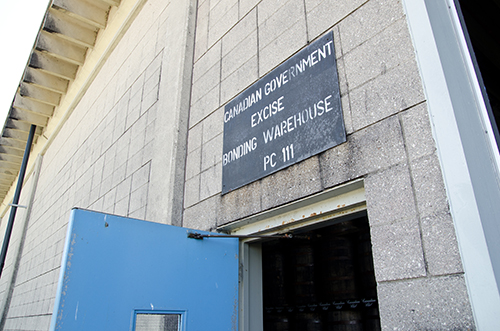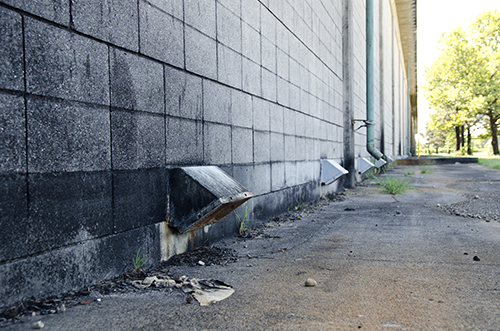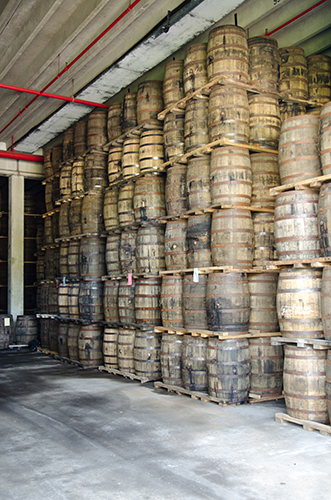Aging at Canadian Club
18 Jul
I learned a lot about Canadian Whiskey on our trip to Canadian Club. Some from our gracious host, and some supplementally from the ever-wise Mark Gruber. For me, one of the most distinctive things about the process is how the whiskey is aged.
Bourbon producers are quick to tell you how the warm summers and cold winters in the central U.S. cause whiskey to rapidly take on the characteristics of the oak barrels. In Scotland, I was told of how the temperate maritime climate allows for a slower, more subtle aging process.
Whiskey maturation at Canadian Club is much different than both. In contrast with the thin, barn-like structures of Kentucky, the warehouses used to store whiskey are built like fortresses. The walls are reinforced concrete, and ventilation is kept to a bare minimum.
The distinctive black mold, found on nearly every aging warehouse from France to the States, is only visible right next to the vents on the bottom of the buildings. Meanwhile inside the facility, barrels are stacked on end atop pallets, and filling every available space.
The sheer amount of whiskey combined with the lack of ventilation make for a very volatile atmosphere. Walking into the warehouse in Windsor was much different than any other such facility I’ve been to. Alcohol fumes permeate the air and I felt immediately short of breath. There are a few reasons why the facility is so sealed off.
First is for climate control. Canadian club regulates the temperature of all of their warehouses year-round. Despite the snowy winters and sweltering summers, the temperature in the facility never strays much from 72 degrees Fahrenheit. This eliminates the expansion and contraction of the oak barrels and makes for a very subtle expression of aging on the whiskey. Contrast this with Bourbon production, where char and oak are king.
The second reason is for safety. We were shown an aerial photo of one of the main aging sites (which I searched far and wide for on the internet to no avail,) and I was shocked to see them set in a tight grid covering a giant swath of former farm land. I was immediately taken back to my experience at Heaven Hill distillery, the folks at which know all too well the reasoning behind spacing out rickhouses.
In 1996 a fire at Heaven Hill distillery spread quickly from one rickhouse to the next, wiping out a massive amount of stock. It is for this very reason that Bourbon producers are generally very cautious about how close together they place their warehouses. The idea behind this is that if one catches fire, it’s almost certainly going to be destroyed, but at very least the damages will be contained to only that one warehouse.
At Canadian Club the warehouses couldn’t be any closer together. I was assured though that the fire suppression capabilities and the design of the facilities themselves assures that were a fire to start, it would be contained without any risk to the rest of the aging stock.





No comments yet